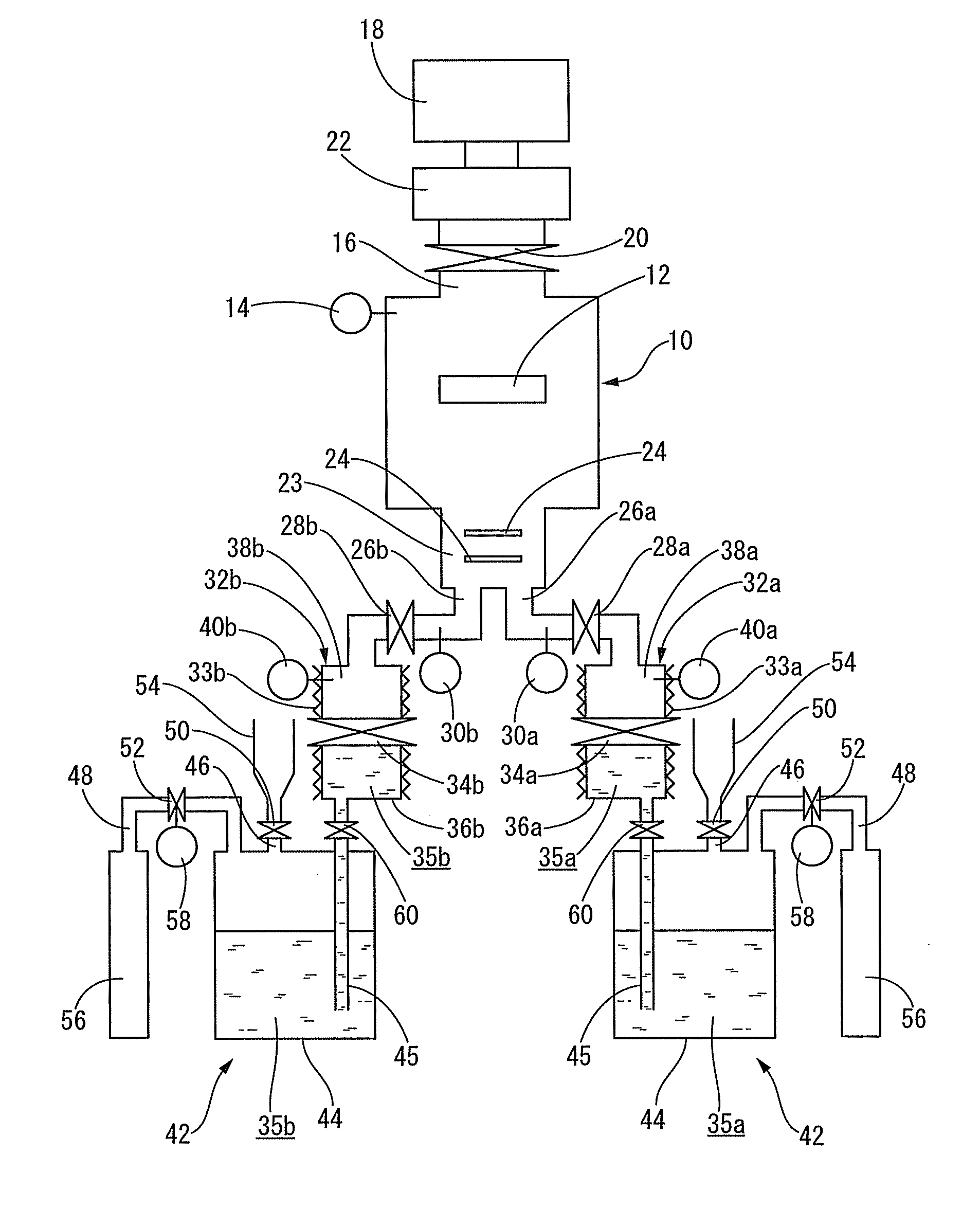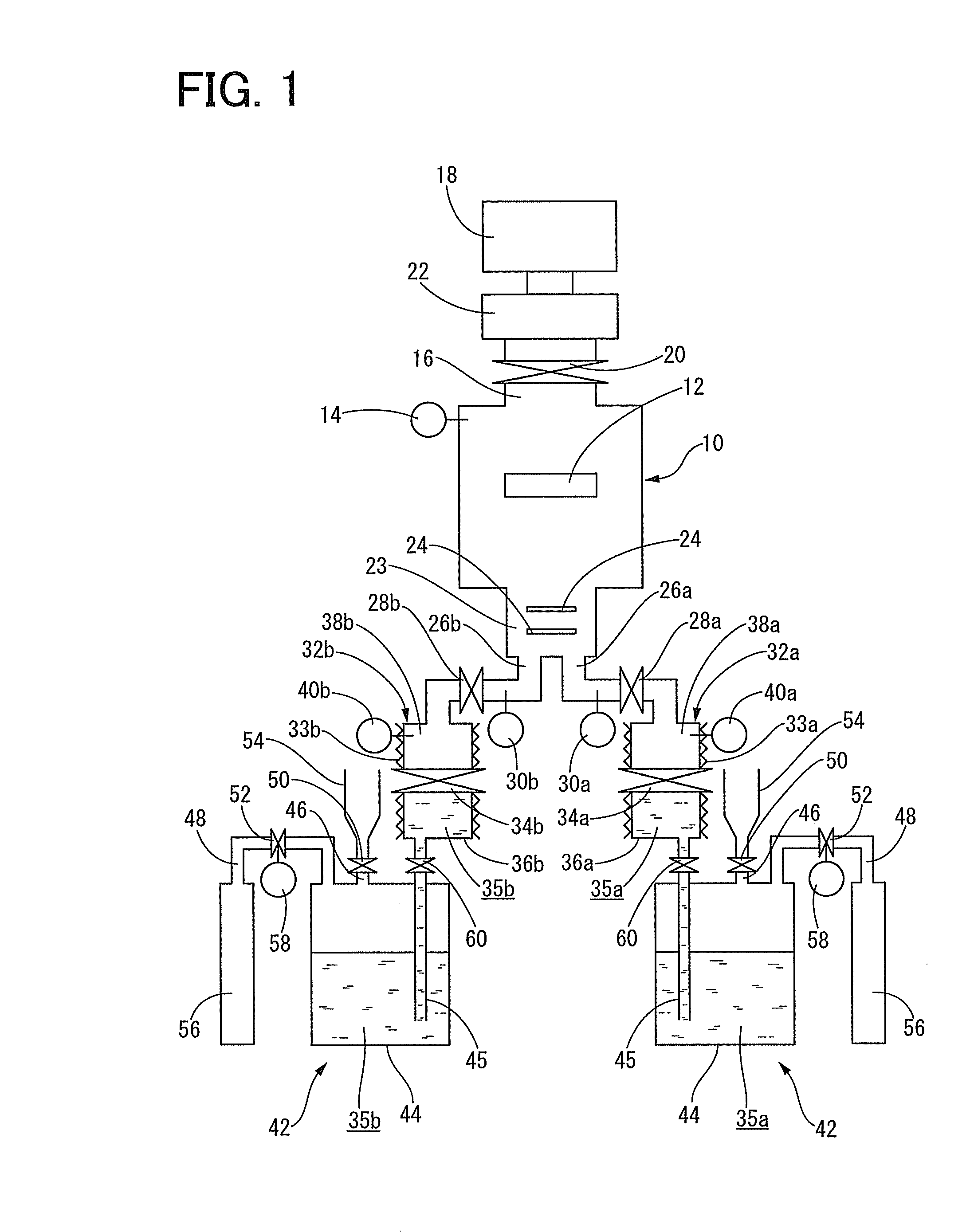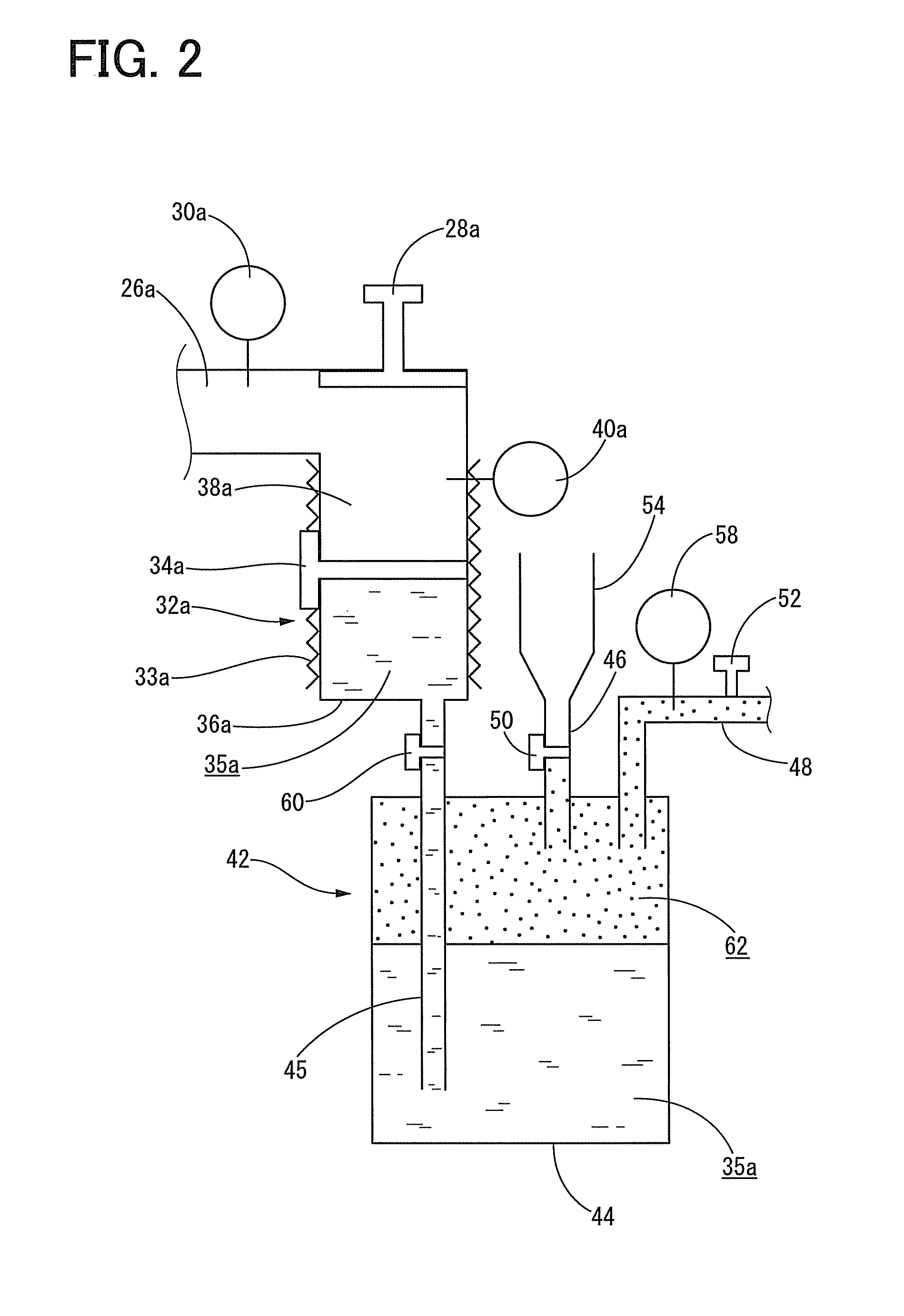Method of forming organic polymer thin film and an apparatus for forming the organic polymer thin film
a technology of organic polymer and thin film, which is applied in the direction of vacuum evaporation coating, chemical vapor deposition coating, coating, etc., can solve the problem of difficult control of the composition and thickness of difficult to form organic polymer thin film on the surface of the substrate, and difficult to achieve stoichiometric proportion of monomer proportion on the substrate surface, etc. problem, to achieve the effect of high film formation efficiency, excellent reproducibility and stably
- Summary
- Abstract
- Description
- Claims
- Application Information
AI Technical Summary
Benefits of technology
Problems solved by technology
Method used
Image
Examples
example 1
[0132]Initially, as monomers, two kinds of monomers, i.e., 1,3-bis(isocyanatemethyl)cyclohexane and methylenebis(4-cyclohexylamine), in a liquid form were each provided in a predetermined amount. Further, as an apparatus for forming an organic polymer thin film, an apparatus having a structure shown in FIG. 1 was provided. Specifically, the apparatus for forming an organic polymer thin film used herein includes a deposition chamber having a volume of 0.10 m3, a mixing chamber having a volume of 0.01 m3, and a first and second evaporation source containers, respectively, including a first and second vapor-storage chambers having a volume of 150 ml and first and second liquid-storage chambers having a volume of 100 ml.
[0133]Then, 100 ml of 1,3-bis(isocyanatemethyl)cyclohexane, which is the same volume as that of the first liquid-storage chamber, was contained in the first liquid-storage chamber, and 100 ml of methylenebis(4-cyclohexylamine), which is the same volume as that of the sec...
PUM
| Property | Measurement | Unit |
|---|---|---|
| volume | aaaaa | aaaaa |
| volume | aaaaa | aaaaa |
| volume | aaaaa | aaaaa |
Abstract
Description
Claims
Application Information
 Login to View More
Login to View More - R&D
- Intellectual Property
- Life Sciences
- Materials
- Tech Scout
- Unparalleled Data Quality
- Higher Quality Content
- 60% Fewer Hallucinations
Browse by: Latest US Patents, China's latest patents, Technical Efficacy Thesaurus, Application Domain, Technology Topic, Popular Technical Reports.
© 2025 PatSnap. All rights reserved.Legal|Privacy policy|Modern Slavery Act Transparency Statement|Sitemap|About US| Contact US: help@patsnap.com



